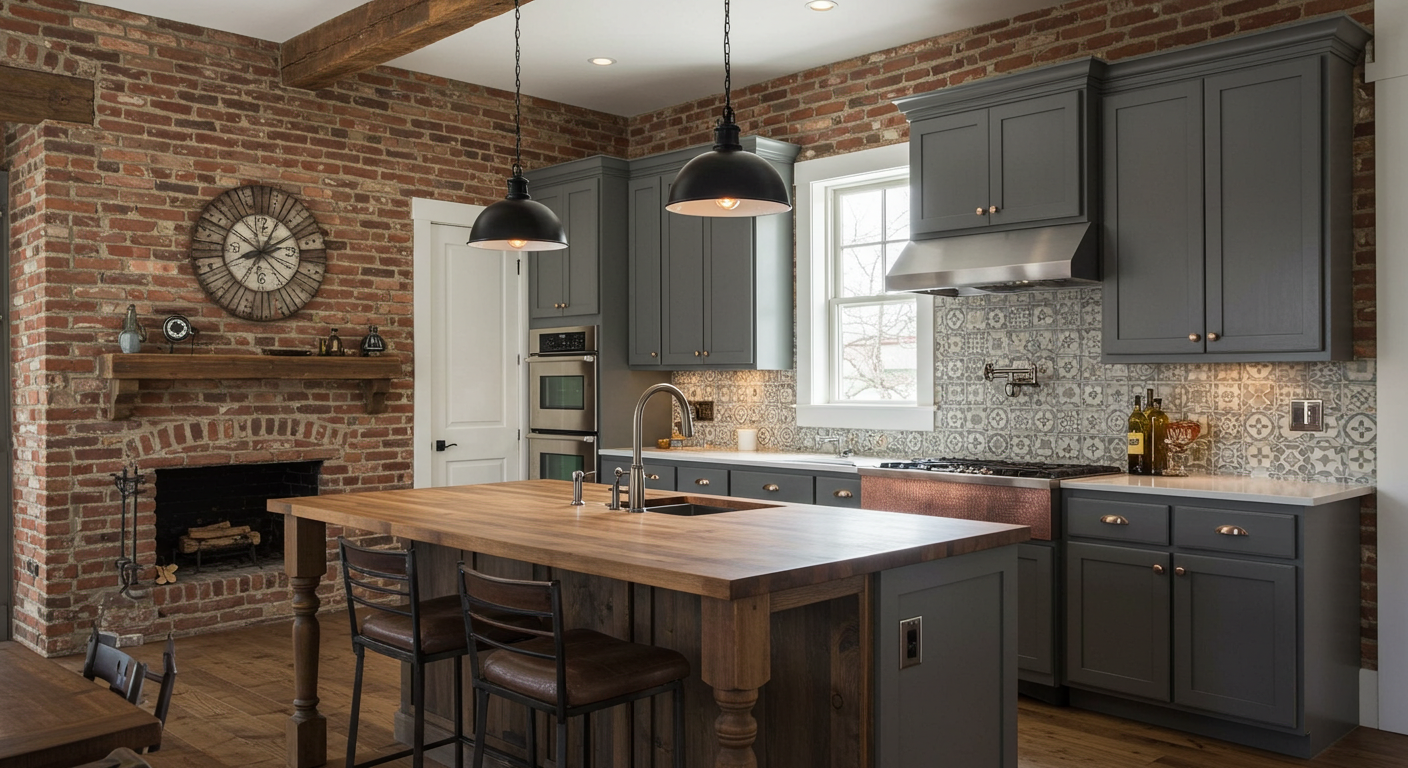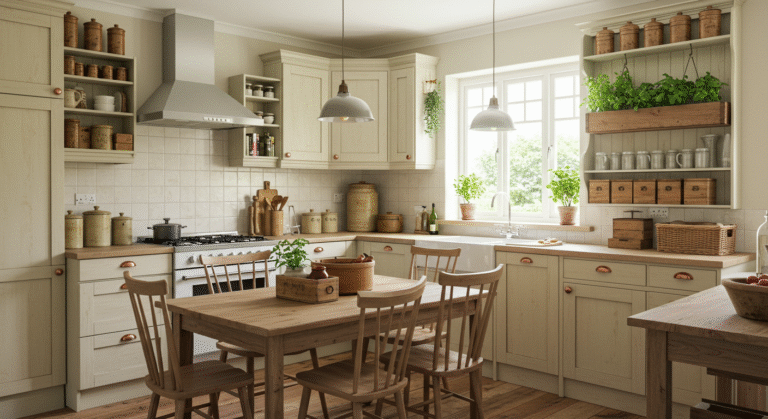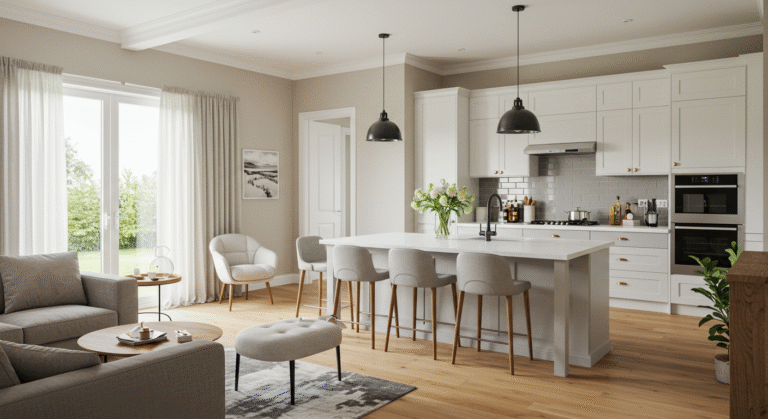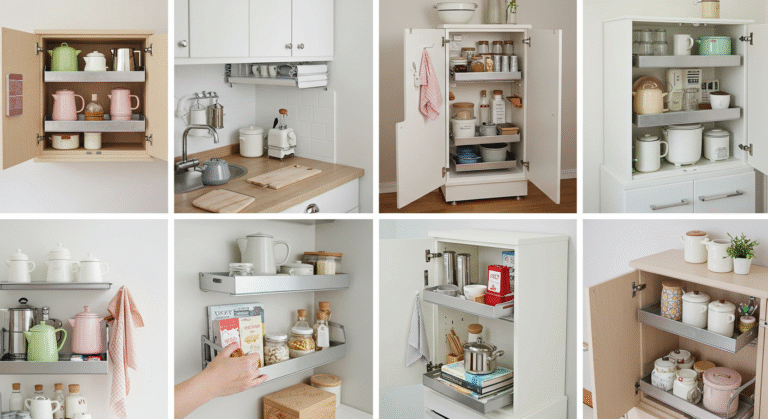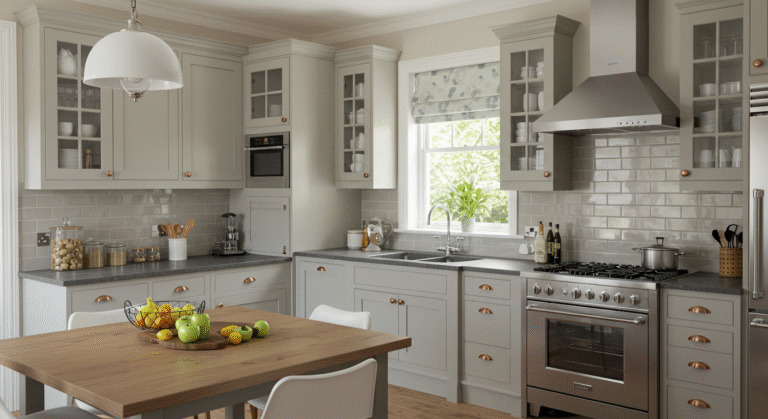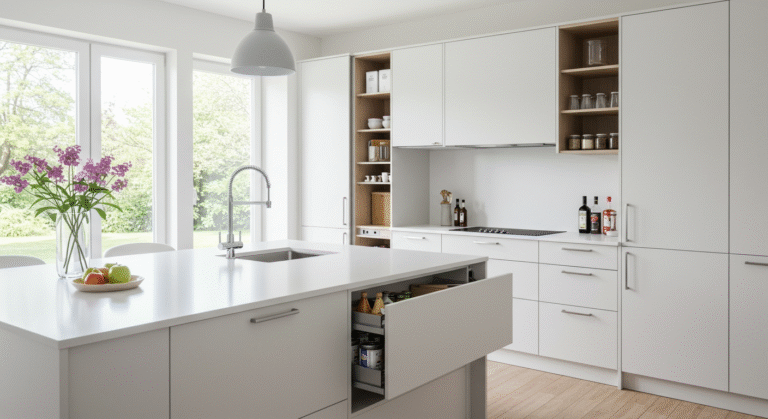15+ Inspiring Open Kitchen Remodel Ideas
As the heart of the home, the kitchen is where memories are made, and culinary magic happens. “The kitchen is the heart of the home, and it should be designed to be the warmest and most inviting room in the house,” says renowned designer, Julia Child. This quote resonates with many homeowners who aspire to create a warm and inviting space that fosters connection and creativity.
I will guide you through the most inspiring and practical open kitchen remodel ideas that can transform your home’s heart into a functional and beautiful space. By exploring various design elements, you’ll discover how removing walls can create a more spacious environment that enhances both cooking and entertaining.
Key Takeaways
- Discover how to create a functional and beautiful kitchen space
- Explore various design elements that make open kitchens appealing
- Learn how to enhance cooking and entertaining areas
- Find actionable ideas for kitchens of all sizes and budgets
- Understand the importance of layout considerations and material selections
The Appeal of Open Kitchen Designs
The shift towards open kitchen designs reflects a desire for a more integrated and sociable home environment.
Open kitchens have gained popularity due to their ability to create a more inclusive atmosphere. By removing barriers between the kitchen and living room, homeowners can foster a sense of community and togetherness.
Why Open Kitchens Have Become So Popular
- Open kitchen designs promote a more social cooking experience, allowing for interaction between the cook and others in the room.
- Removing walls between the kitchen and adjacent spaces creates a sense of space and openness.
Benefits of Opening Up Your Kitchen Space
Open kitchen design facilitates better traffic flow and communication. The multi-functional nature of these spaces makes them ideal for modern lifestyles, serving as cooking areas, dining spaces, and social hubs. This openness can also increase a home’s resale value, making it a smart investment.
Understanding Open Kitchen Remodel Ideas
Creating an open kitchen that works well involves more than just removing walls. It requires a thoughtful approach to space planning and design.
Key Elements of Successful Open Kitchen Designs
A successful open kitchen design incorporates several key elements. First, it’s essential to evaluate your existing kitchen layout and identify which walls can be removed to create a more functional space. I always recommend consulting with a professional to determine which walls are load-bearing and what structural modifications might be necessary.
Read Also: Dining Room
Considerations Before Removing Walls
Before tearing down walls, consider the overall layout and how it will impact the functionality of your kitchen. Sightlines are also crucial; your kitchen should look attractive from all angles in the adjoining spaces. Understanding the balance between openness and definition is key to creating distinct zones within your open kitchen layout without using walls.
Seamless Kitchen-to-Living Room Transitions
To achieve a cohesive look, it’s crucial to focus on the transition between the kitchen and living room in open kitchen designs. A well-designed transition creates a harmonious open kitchen floor plan.
Flooring Solutions for Unified Spaces
One effective way to unify the kitchen and living room is through consistent flooring. Using the same flooring material throughout the open area creates visual flow. However, subtle transitions can be used when necessary for practical reasons.
Color Schemes That Flow Between Rooms
A coordinated color scheme can tie together the living room and kitchen areas while maintaining each space’s distinct character. By selecting a palette that flows naturally between rooms and adding visual interest, you can create a harmonious open kitchen design. Using accent colors strategically can define different functional areas within the floor plan.
Kitchen Islands as Focal Points
A kitchen island is more than just a workspace; it’s the heart of an open kitchen design. I consider the kitchen island to be a crucial element that serves both functional and aesthetic purposes.
Multifunctional Island Designs
My approach to kitchen island design emphasizes multifunctionality, incorporating cooking surfaces, prep areas, storage, and seating. Innovative kitchen island configurations can include sinks, cooktops, or specialized stations depending on your cooking habits and space requirements.
Seating Options for Kitchen Islands
When it comes to kitchen island seating, various options are available, from casual counter stools to more formal seating arrangements. The size and shape of your kitchen island should relate proportionally to your overall space, providing adequate clearance for movement.
For smaller kitchens, creative solutions like peninsula alternatives and mobile island options can incorporate island functionality without overwhelming the space.
Open Shelving vs. Traditional Cabinetry
Open shelving and traditional cabinetry represent two distinct approaches to kitchen storage, each with its own set of advantages and disadvantages. The choice between them can significantly impact the overall aesthetic and functionality of your kitchen.
Styling Open Shelves Effectively
To style open shelves effectively, it’s essential to strike a balance between functional items and decorative elements. This balance enhances your kitchen’s aesthetic without sacrificing practicality. You can display your favorite cookbooks, decorative plates, and glassware to add a personal touch.
Mixed Storage Solutions for Open Kitchens
For those who love the look of open shelving but worry about storage, mixed storage solutions can offer the best of both worlds. Combining some open shelves with traditional cabinets and cabinet try can maximize storage while maintaining the open, spacious feel that makes open kitchens so appealing. This approach allows for a balance between accessibility, functionality, and visual appeal, creating an ideal space for cooking and socializing.
By considering your specific needs and preferences, you can create a kitchen that is both beautiful and functional, with the right mix of open shelving and traditional cabinets.
Read Also: Living Room
Lighting Strategies for Open Kitchen Spaces
In open kitchen spaces, lighting plays a pivotal role in defining different areas and enhancing overall ambiance. A thoughtful lighting design is crucial for creating a harmonious and functional space.
Pendant Lighting Over Islands and Dining Areas
Pendant lights are a popular choice for illuminating kitchen islands and dining areas. They not only provide task lighting but also serve as a design statement, adding personality to your open kitchen.
Layered Lighting for Different Activities
My approach to kitchen lighting involves multiple layers: ambient lighting for general illumination, task lighting for work areas like countertops and cooking surfaces, and accent lighting to highlight architectural features or decor. This layered approach ensures that your open kitchen is both functional and visually appealing.
By incorporating energy-efficient and smart lighting solutions, you can adjust the mood and functionality of your open kitchen throughout the day. This flexibility is key to creating a space that is both beautiful and functional.
Statement Backsplashes in Open Kitchens
When it comes to open kitchens, the backsplash plays a pivotal role in defining the space’s style and ambiance. A well-designed backsplash can elevate the aesthetic of an open kitchen, tying together disparate design elements.
Extending Backsplashes as Design Features
I’ll guide you through extending your tile backsplash beyond the typical counter-to-cabinet area to create dramatic design features. This approach can enhance your open kitchen’s appeal, making it a focal point of your home.
Materials That Make an Impact
My experience has shown that tile and marble backsplashes can transform a kitchen from ordinary to extraordinary. For those seeking drama, a full-wall backsplash can serve as an artistic focal point, anchoring your kitchen design.
Selecting the right backsplash material is crucial, balancing visual impact with durability and maintenance requirements for busy kitchen environments.
Incorporating Dining Areas in Open Kitchens
In open kitchen remodels, creating a dining space that feels connected yet distinct is crucial. I’ve designed many open kitchens that seamlessly incorporate dining areas—I’ll share strategies for creating spaces that work well for both casual and formal occasions.
Casual Dining Solutions
For casual daily meals, a charming breakfast nook can maximize space efficiency while adding character to your kitchen. I’ll guide you through various table configurations and placement options that work well in open kitchen-dining areas.
Formal Dining Options
For homes where formal dining is important, I’ll demonstrate how to carve out a more defined dining room area within an open concept. My approach focuses on creating a natural flow between cooking and eating zones while ensuring each area functions well for its intended purpose.
By incorporating flexible dining solutions, you can adapt your open kitchen space to different occasions, from quick family breakfasts to larger dinner gatherings.
Smart Open Kitchen Layout Ideas
When it comes to open kitchens, a smart layout is key to achieving a harmonious balance between cooking, socializing, and movement. A well-designed kitchen layout not only enhances functionality but also contributes to the overall aesthetic of the space.
Optimizing the Work Triangle
The classic work triangle, connecting the sink, refrigerator, and cooking range, remains a fundamental principle in kitchen design. In open kitchens, adapting this principle to larger, more complex floor plans is crucial. By positioning these elements thoughtfully, you can create an efficient workflow that minimizes unnecessary steps while cooking.
| Layout Element | Purpose | Consideration |
| Sink | Primary water source | Position near cooking area |
| Cooking Range | Central cooking area | Avoid bottlenecks |
| Refrigerator | Storage and refreshment | Accessible from multiple paths |
Traffic Flow Considerations
Effective kitchen layout planning also involves considering traffic patterns to avoid creating bottlenecks or disrupting the flow between spaces. By thoughtfully positioning key elements, you can create natural boundaries between functional zones without relying on physical dividers.
As illustrated in the table above, a well-planned layout can significantly enhance the functionality and flow of an open kitchen. By optimizing the work triangle and considering traffic flow, you can create a space that is both beautiful and functional.
Ceiling Treatments for Open Kitchen Designs
Open kitchen ceilings are a blank canvas waiting for the right design touch. In open kitchen designs, the ceiling is more than just a surface above; it’s an opportunity to add architectural interest and define different areas within the space.
Defining Zones with Ceiling Details
I use various ceiling treatments to visually separate the kitchen from adjacent areas. For instance, a coffered ceiling can add character while creating a sense of intimacy in the kitchen area.
Architectural Elements That Add Character
In homes with high ceilings, I employ strategies to bring coziness to the kitchen without sacrificing the openness of the room or space. By incorporating design elements like wood beams, I create a visually appealing design that complements the overall area.
Incorporating Wood Elements in Open Kitchens
Wood accents and features are essential for adding depth and character to open kitchen spaces. I believe wood elements add essential warmth and texture to open kitchens, and I’ll show you how to incorporate them thoughtfully for both beauty and durability.
Durable Wood Flooring Options
When it comes to wood flooring in kitchens, I’ll guide you through options that can withstand heavy traffic and potential moisture while maintaining their good looks over time. Engineered wood products, for instance, offer the warmth of wood with enhanced durability in kitchen environments.
Warm Wood Accents
My approach to incorporating wood accents from ceiling beams to floating shelves can add character and visual interest to even the most contemporary open kitchen designs. I’ll share insights on how wood cabinets can be mixed with other materials to create depth and interest in your kitchen design without overwhelming the space.
By combining different wood tones and finishes, you can create a layered, collected look that feels both timeless and personal. This thoughtful incorporation of wood elements can elevate your open kitchen, making it a warm and inviting area for family and friends.
Color Strategies for Open Kitchen Remodels
When it comes to open kitchen remodels, selecting the right color strategy is crucial for creating a harmonious and functional space. A well-designed color scheme can enhance the overall aesthetic of your open kitchen, making it a welcoming area for cooking, dining, and socializing.
Creating Visual Zones with Color
One effective way to define different areas within an open kitchen is by using color to create visual zones. This can be achieved through strategic paint choices that subtly delineate the kitchen, dining, and living areas without disrupting the open flow between spaces. For instance, you can use a bold color for the cabinets to make the kitchen stand out, while maintaining a neutral tone for the surrounding areas.
Trending Color Palettes for Open Kitchens
Some trending color palettes for open kitchens include monochromatic schemes, complementary colors, and neutral backgrounds with bold accents. The key is to strike a balance between timelessness and contemporary appeal, ensuring your kitchen remains stylish for years to come.
| Color Scheme | Description | Effect on Space |
| Monochromatic | Using different shades of the same color | Creates a cohesive and harmonious space |
| Complementary Colors | Pairing colors that are opposite each other on the color wheel | Adds visual interest and depth to the room |
| Neutral with Bold Accents | Using neutral tones as the base and adding bold colors as accents | Creates a balanced and dynamic kitchen environment |
By thoughtfully selecting colors and creating visual zones, you can enhance the functionality and aesthetic appeal of your open kitchen remodel. Whether you opt for a bold statement or a subtle neutral approach, the right color strategy will make your kitchen a beautiful and inviting space.
Handling Kitchen Odors and Noise in Open Spaces
While open kitchens enhance social interaction, they require thoughtful planning to mitigate issues like cooking smells and appliance noise. Effective management of these elements is crucial to maintaining a comfortable and inviting living space.
Ventilation Solutions for Open Kitchens
Proper ventilation is essential in open kitchens to remove cooking odors and moisture. Selecting the right hood can make a significant difference. For open concept kitchens, a powerful and efficient range hood is not just a practical solution but also a design statement.
When choosing a range hood, consider factors like the size of your kitchen, the type of cooking you do most often, and the overall aesthetic you want to achieve. A well-chosen hood can effectively capture cooking odors and steam, improving air quality in your open kitchen and adjacent room.
Sound-Dampening Design Elements
In addition to managing odors, reducing noise is vital for a pleasant living environment. Incorporating sound-absorbing materials and design elements can significantly dampen the noise from appliances and cooking activities. This can include using acoustic panels, installing quieter appliances, and incorporating soft furnishings that absorb sound.
By thoughtfully addressing both ventilation and noise, you can enjoy the benefits of an open kitchen while maintaining a comfortable and functional living space.
Budget-Friendly Open Kitchen Remodel Ideas
Creating an open kitchen doesn’t have to break the bank; I’m here to share my top tips for a budget-friendly remodel. When working with limited funds, it’s essential to identify areas that deliver the biggest visual impact for your investment.
High-Impact, Low-Cost Transformations
One of the most effective ways to transform your kitchen without overspending is by giving your existing cabinets a fresh coat of paint. This simple update can dramatically change the look and feel of your space. Additionally, consider repainting or repapering the wall behind your kitchen island or dining area to create a cohesive look.
- Repurpose existing elements to save on materials and labor.
- Focus on ideas that create a focal point in your open kitchen, such as a statement light fixture or a bold backsplash.
Phasing Your Open Kitchen Remodel
For those who can’t afford to remodel their entire kitchen at once, phasing your project over time can be a practical solution. Start with the elements that matter most to you, such as updating your cabinets or reconfiguring your space for better flow.
Luxury Features for Open Kitchen Designs
Elevating your open kitchen to a luxury space involves incorporating high-end features that not only enhance functionality but also serve as visual centerpieces. Luxury kitchens often boast premium appliances that are both powerful and visually stunning.
Statement Appliances Worth the Splurge
Professional-grade ranges and custom hood designs can anchor a luxury kitchen, reflecting your personal cooking style and aesthetic preferences. Specialty sinks and faucets can elevate both the functionality and visual appeal of your kitchen island or main work area.
Custom Details That Elevate the Space
Marble countertops and other premium materials can add timeless luxury visible from throughout your open living space. Thoughtful custom details, from specialized storage solutions to handcrafted hardware, can elevate your kitchen design while reflecting your unique lifestyle needs.
Bringing Your Open Kitchen Remodel to Life
Bringing your dream open kitchen to life involves more than just removing walls. It requires careful planning, precise execution, and a clear understanding of your design goals.
Professional Expertise vs. DIY Approaches
When it comes to open kitchen remodels, deciding between hiring professionals and taking a DIY approach is crucial. My experience has shown that removing walls often requires professional expertise to ensure structural integrity and compliance with building codes.
When hiring professionals, look for structural engineers and contractors with experience in kitchen remodels. They can help you navigate the complexities of your project, from assessing the condition of your walls to obtaining necessary permits.
Timeline Expectations for Your Remodel
Understanding the timeline for your open kitchen remodel is essential for planning. The duration of your project will depend on its scale, ranging from simple refreshes that can be completed in a few weeks to major renovations involving structural changes that may take several months.
| Project Scale | Timeline |
| Simple Refresh | 2-4 weeks |
| Major Renovation | 3-6 months |
To manage your project effectively, it’s crucial to prepare your home and family for the disruption. Setting up temporary cooking arrangements and communicating with your contractors can help minimize delays and ensure a smooth process.
FAQ
What are the key elements to consider when designing an open kitchen?
When designing an open kitchen, I consider several key elements, including the layout, lighting, and storage. A well-designed open kitchen should have a clear traffic path, sufficient storage, and a visually appealing aesthetic that ties in with the adjacent living areas.
How do I choose the right flooring for my open kitchen and living room?
To create a unified look, I recommend selecting a flooring material that complements both the kitchen and living areas. Hardwood, tile, or luxury vinyl tile are popular choices because they are durable and visually appealing. Consider factors like maintenance, durability, and style when making your decision.
What are some effective ways to manage kitchen odors and noise in an open kitchen?
To minimize kitchen odors and noise, I suggest installing a high-quality range hood with a powerful ventilation system. Additionally, incorporating sound-dampening design elements, such as acoustic panels or a kitchen island with a built-in cabinet, can help reduce noise levels.
Can I still have a formal dining area in an open kitchen concept?
Yes, you can still have a formal dining area in an open kitchen concept. I recommend defining the dining space with a distinct lighting fixture, a statement piece of furniture, or a rug to create a clear visual separation from the kitchen.
How do I optimize my open kitchen layout for traffic flow?
To optimize traffic flow in your open kitchen, I suggest creating a clear “work triangle” between the sink, stove, and refrigerator. Consider the “golden zone” concept, where you place frequently used items within easy reach to minimize movement.
What are some budget-friendly ways to update my open kitchen?
To update your open kitchen on a budget, I recommend focusing on high-impact, low-cost elements like painting, replacing lighting fixtures, or adding a statement backsplash. You can also consider refinishing or repurposing existing cabinetry to give your kitchen a fresh look.
How do I select a color scheme that flows between my open kitchen and living room?
When selecting a color scheme for your open kitchen and living room, I suggest choosing a palette that complements both areas. Consider the 60-30-10 rule, where 60% of the space features a dominant color, 30% a secondary color, and 10% an accent color.
Conclusion
Open kitchen designs have become increasingly popular, and for good reason – they bring people together. Throughout this guide, I’ve shared a comprehensive collection of open kitchen remodel ideas that can transform your home’s heart into a more functional, beautiful, and social space.
By embracing an open kitchen, you’re not just changing your kitchen; you’re enhancing your entire home. The ideas and practical advice provided aim to inspire and equip you with the knowledge needed to create a kitchen that reflects your lifestyle and aesthetic preferences.
Whether you’re planning a modest refresh or a complete transformation, I hope these ideas help you envision the possibilities for your own open kitchen project, creating a seamless flow between your room and kitchens, ultimately making your home a more enjoyable space to live in.

